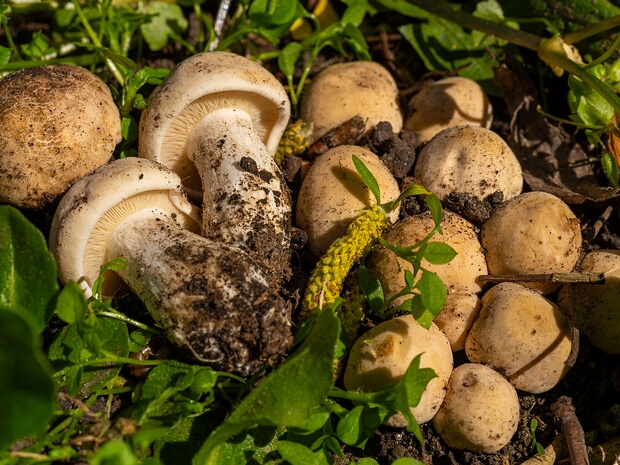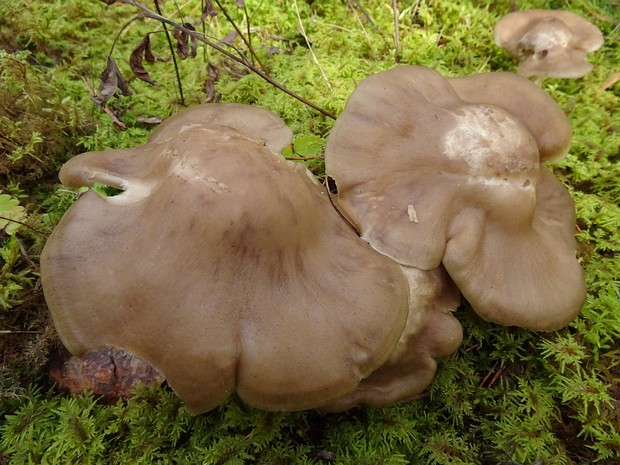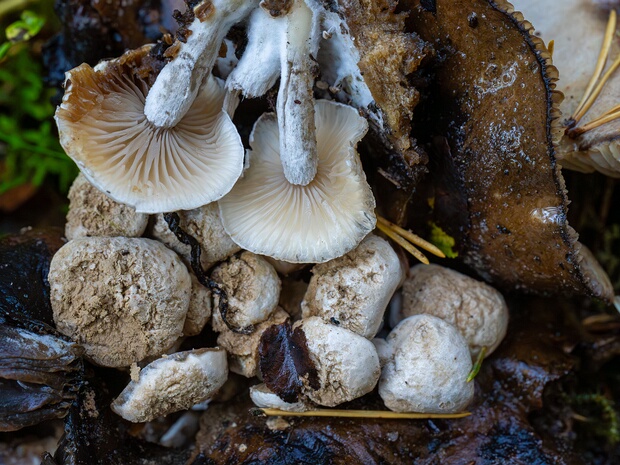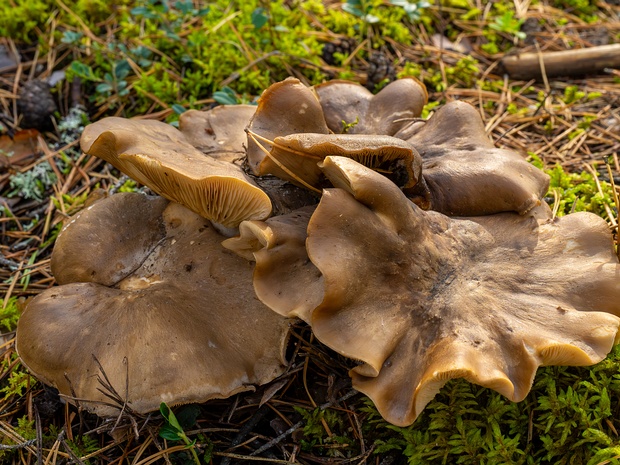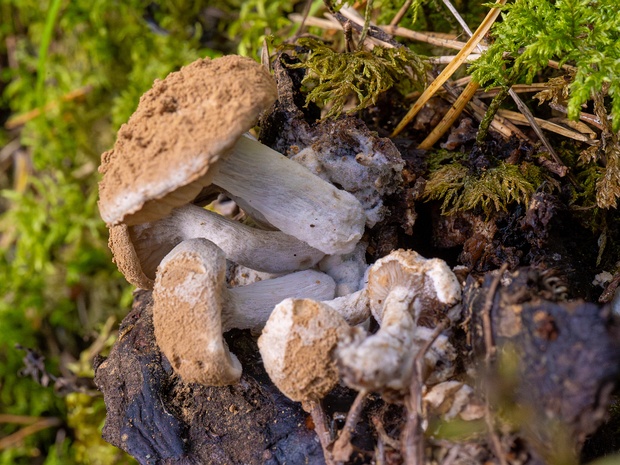Lyophyllaceae - Лиофилловые - Lyophyllaceae family - Schleierlinge 9/30/17—9/13/25
The Lyophyllaceae is a family of basidiomycete fungi in the order Agaricales. It includes a diverse array of gilled mushrooms, many of which are characterized by their white or pale-colored spores.
Members of the Lyophyllaceae family typically have caps that are smooth, dry, and often hygrophanous, meaning they change color when moist. The gills are usually attached to the stem and can be close or crowded together.
Lyophyllaceae fungi are found in various habitats, such as forests, grasslands, and other terrestrial environments. Most species are saprotrophic, decomposing dead organic matter, while others form ectomycorrhizal relationships with certain plants.
These fungi have a global distribution and can be found in North America, Europe, Asia, and other parts of the world.
The Lyophyllaceae family includes several genera, such as Lyophyllum, Calocybe, and Tephrocybe.
Fungi in the Lyophyllaceae family play essential ecological roles in their environments by breaking down organic matter and facilitating nutrient cycling.
The spore sizes and shapes in Lyophyllaceae fungi are variable, but most species produce smooth, ellipsoid, or elongated spores. Spore print colors are usually white, pale cream, or slightly yellowish.
Many Lyophyllaceae species have mild or nondescript odors and tastes, which can make them challenging to identify based solely on these characteristics.
Edibility varies among Lyophyllaceae species, with some being edible, while others are inedible or have unknown edibility. It is crucial to accurately identify any mushroom before considering it for consumption.
There are no known deadly toxic species in the Lyophyllaceae family, but consuming unidentified or inedible mushrooms can still result in gastrointestinal issues.
Although Lyophyllaceae fungi are not well-known for their medicinal properties, research may reveal potential applications in this area.
The taxonomic classification of Lyophyllaceae is subject to change as new molecular phylogenetic data becomes available, leading to the potential reclassification of some genera or species.
Accurate identification of Lyophyllaceae fungi often requires the examination of microscopic features, such as spore morphology, and the use of chemical tests.
